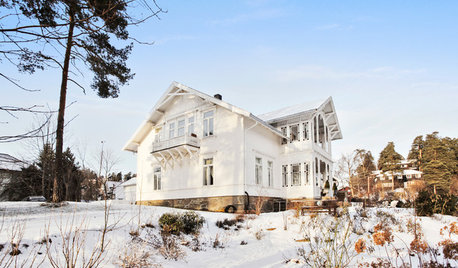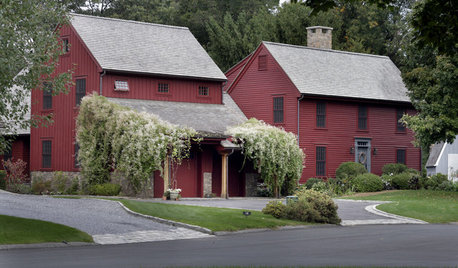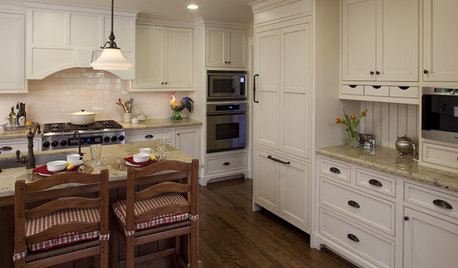How do I get 115 years of paint off my rosettes and molding?
moonsunsky
10 years ago
Related Stories

COLORColor of the Year: Off-White Is On Trend for 2016
See why four paint brands have chosen a shade of white as their hot hue for the new year
Full Story
HOUZZ TOURSHouzz Tour: A Texas Home Gets a Healthy, Fresh Start
Mold eradication was just the beginning for this Austin family's home on a creek bed — toxins of all kinds now don't make it past the door
Full Story
LIFEThe Polite House: How Can I Kindly Get Party Guests to Use Coasters?
Here’s how to handle the age-old entertaining conundrum to protect your furniture — and friendships
Full Story
HOUZZ TOURSHouzz Tour: Updated Elegance for a 200-Year-Old Norwegian Mansion
Original details are restored to glory with a modern color palette and set off by fresh furnishings and a more open layout
Full Story
DECLUTTERINGClutter vs. Keepers: A Guide to New Year's Purging
Simple questions to get in touch with your clutter comfort level — and figure out what needs to go
Full Story
GREAT HOME PROJECTSReady to Repaint Your Home’s Exterior? Get Project Details Here
Boost curb appeal and prevent underlying damage by patching and repainting your home’s outer layer
Full Story
HOUZZ TVHouzz TV: A Famed ‘Painted Lady’ Gets a Gorgeous Update
Join us as we walk with the homeowners through one of San Francisco's landmark Victorians, lovingly restored
Full Story
REMODELING GUIDESCrown Molding: Is It Right for Your Home?
See how to find the right trim for the height of your ceilings and style of your room
Full Story
TRIMTrim Color Tips: Get Your White Trim Right
Set off wood tones, highlight architectural features, go minimalist ... white trim is anything but standard when you know how to use it
Full Story
KITCHEN DESIGN9 Molding Types to Raise the Bar on Your Kitchen Cabinetry
Customize your kitchen cabinets the affordable way with crown, edge or other kinds of molding
Full StoryMore Discussions











Joseph Corlett, LLC
graywings123
Related Professionals
East Peoria Kitchen & Bathroom Designers · Schenectady Kitchen & Bathroom Designers · Springfield Kitchen & Bathroom Designers · South Sioux City Kitchen & Bathroom Designers · Cloverly Kitchen & Bathroom Remodelers · Bethel Park Kitchen & Bathroom Remodelers · Los Alamitos Kitchen & Bathroom Remodelers · Paducah Kitchen & Bathroom Remodelers · Payson Kitchen & Bathroom Remodelers · Saint Augustine Kitchen & Bathroom Remodelers · Winchester Kitchen & Bathroom Remodelers · Gibsonton Kitchen & Bathroom Remodelers · Palos Verdes Estates Architects & Building Designers · Saint Paul Architects & Building Designers · South Elgin Architects & Building Designersgeller
Debbie Downer
Joseph Corlett, LLC
concretenprimroses
katy-lou
lsimms
whammytap